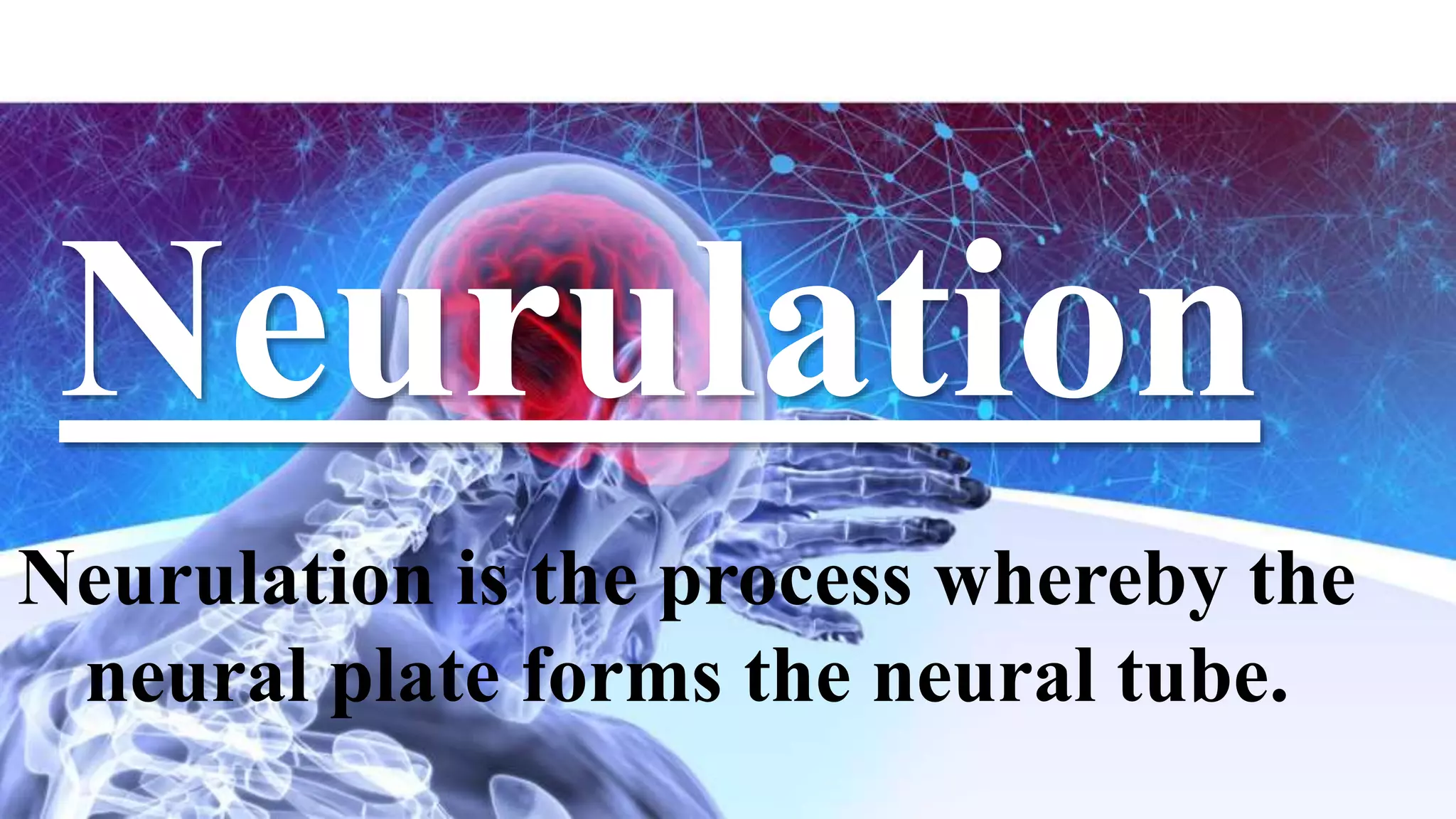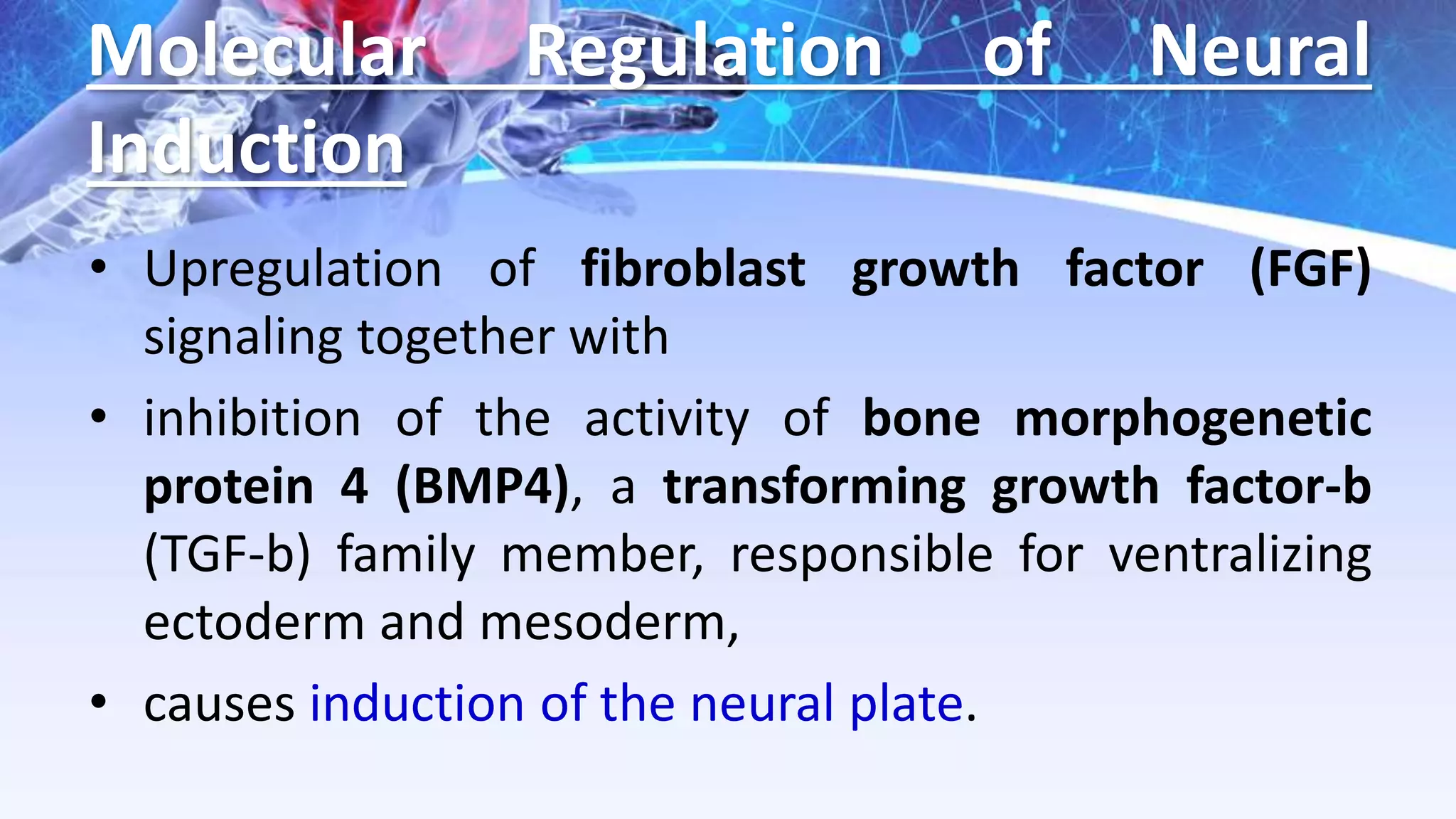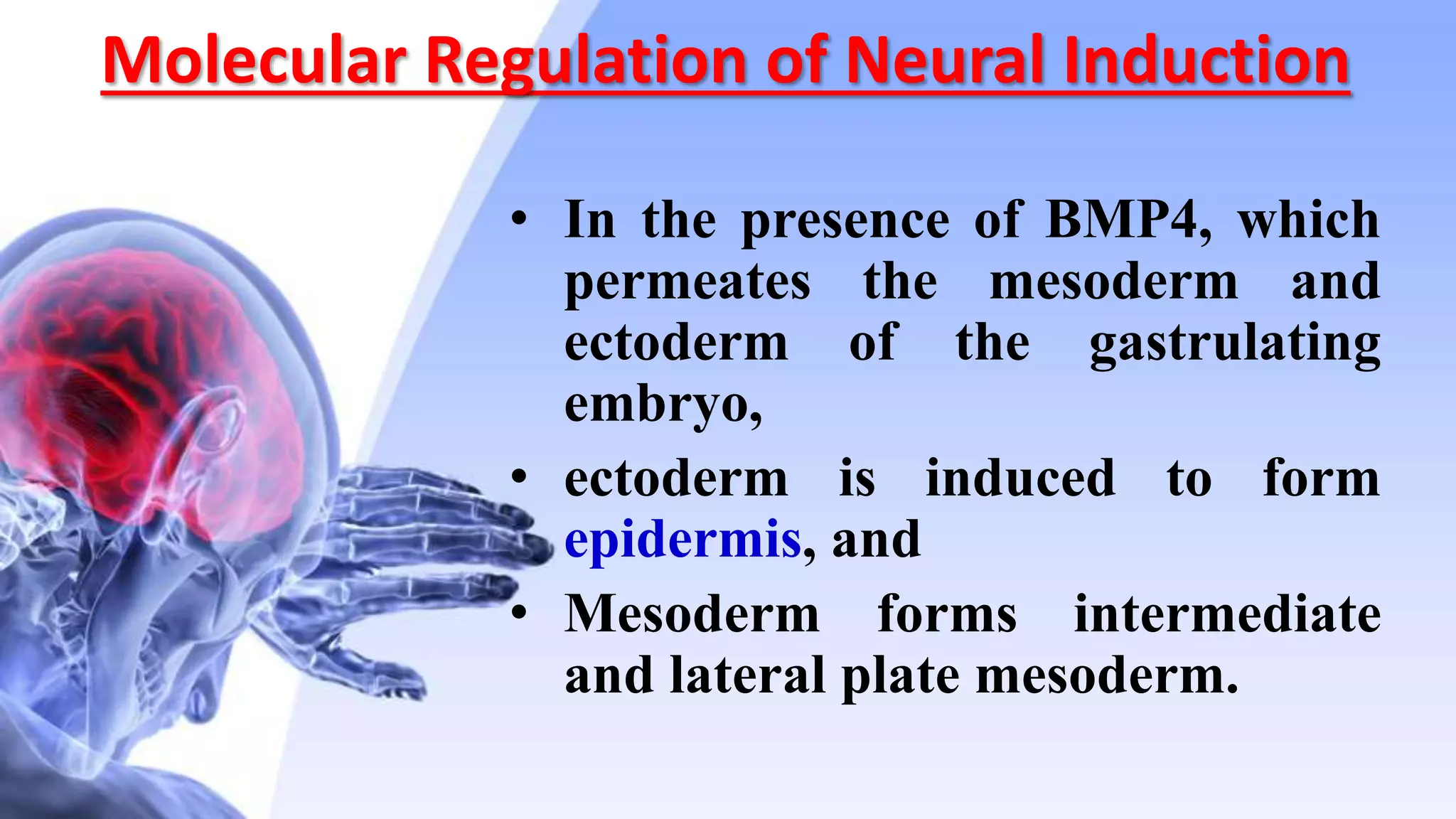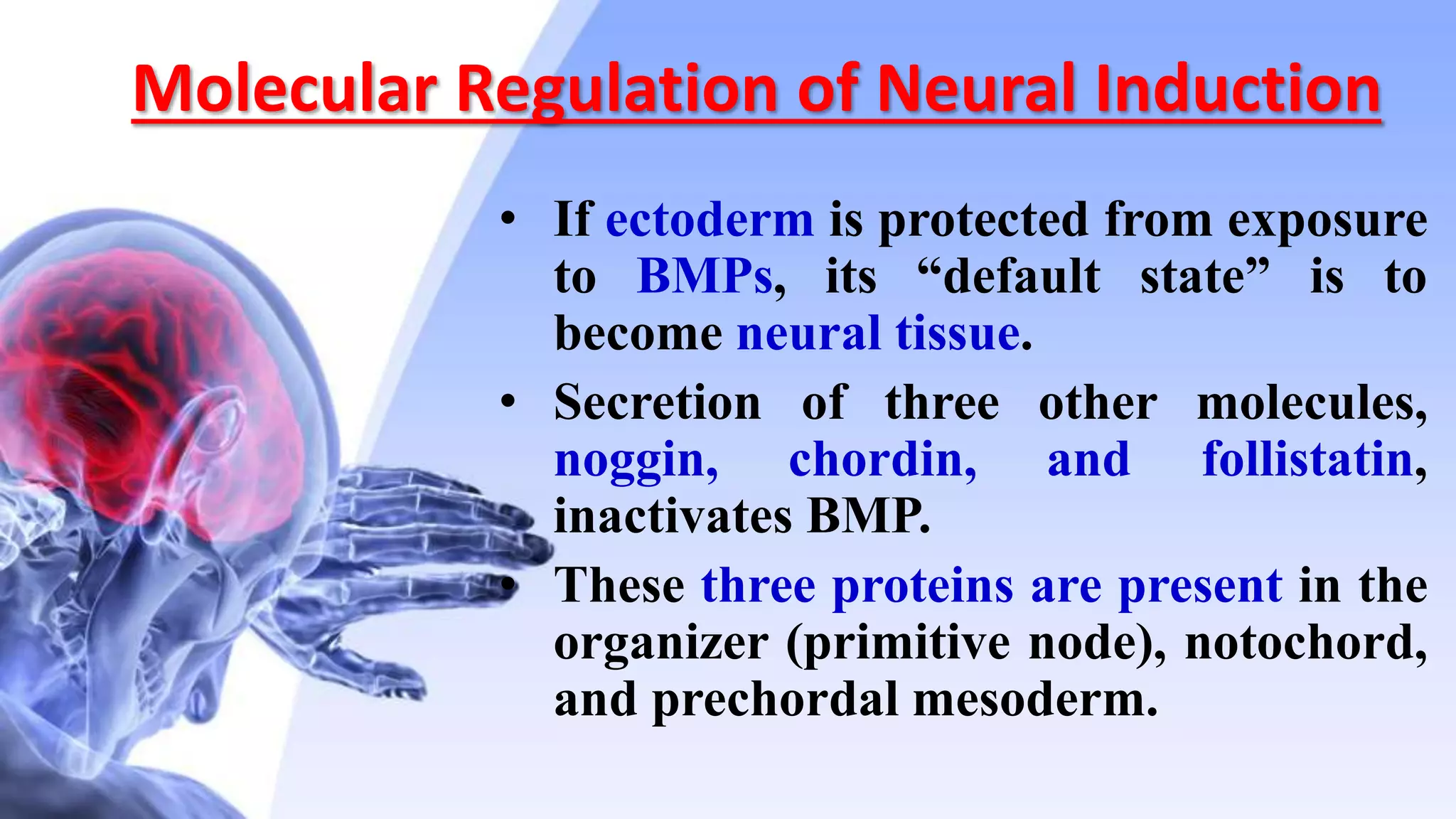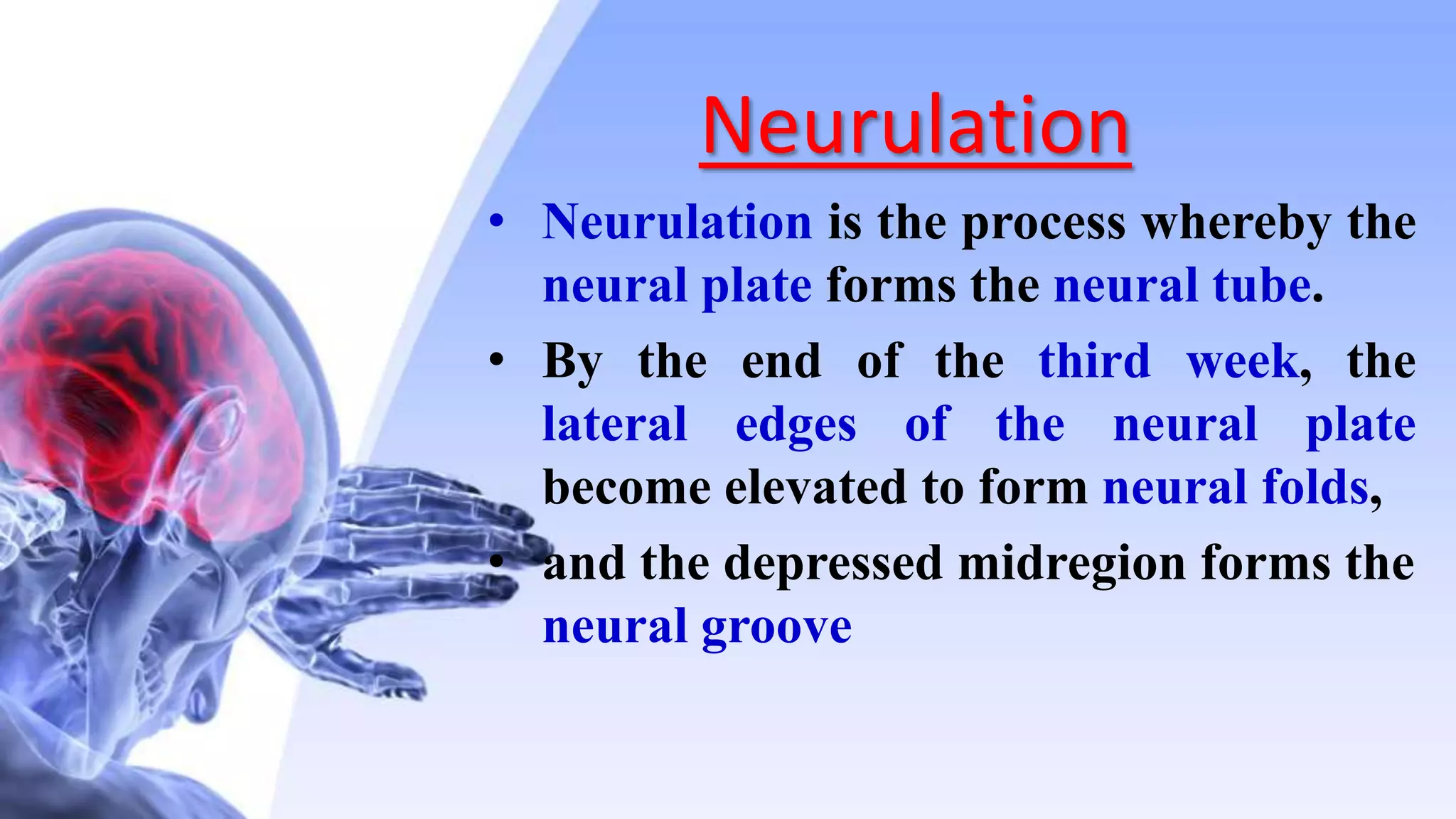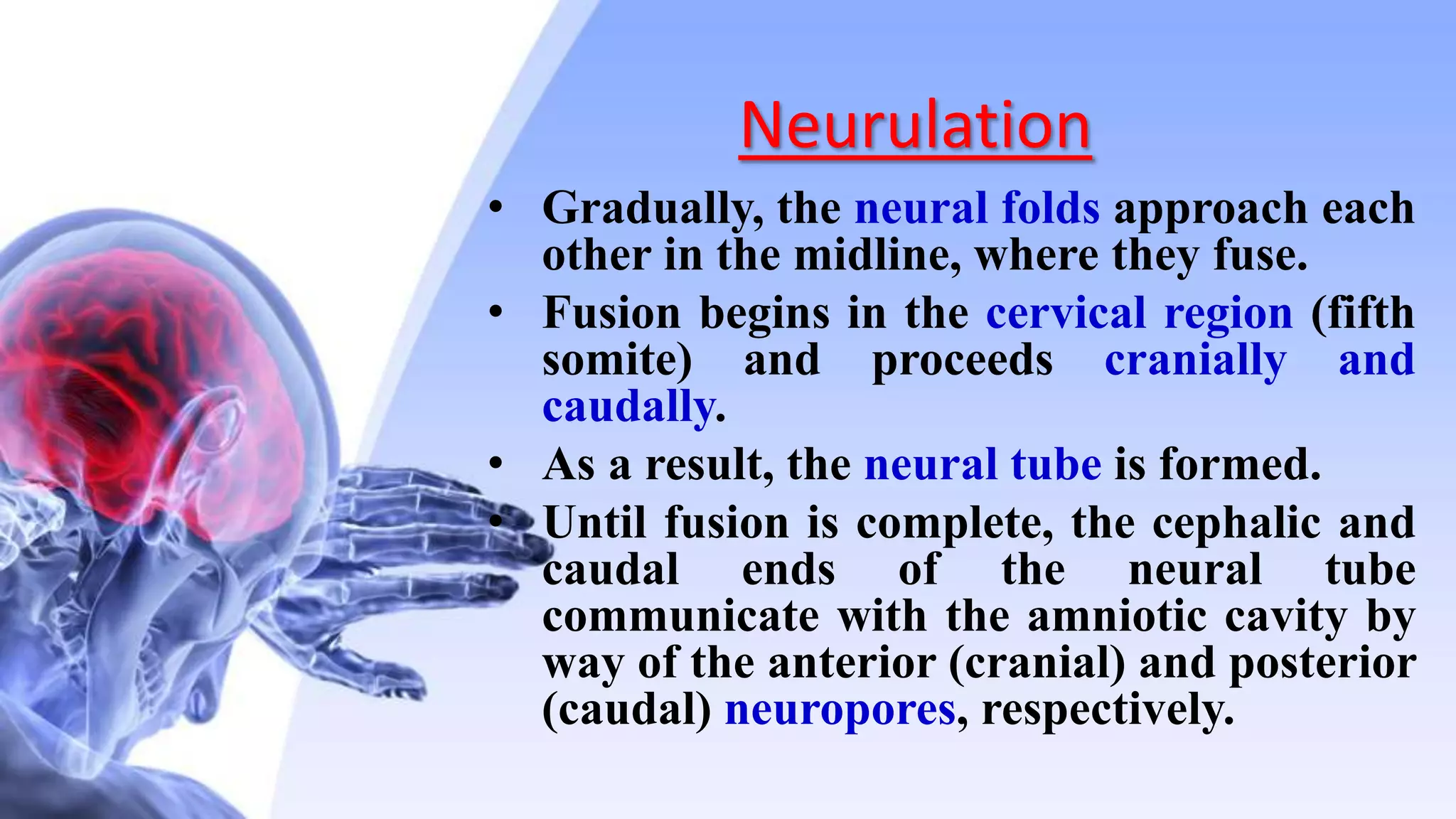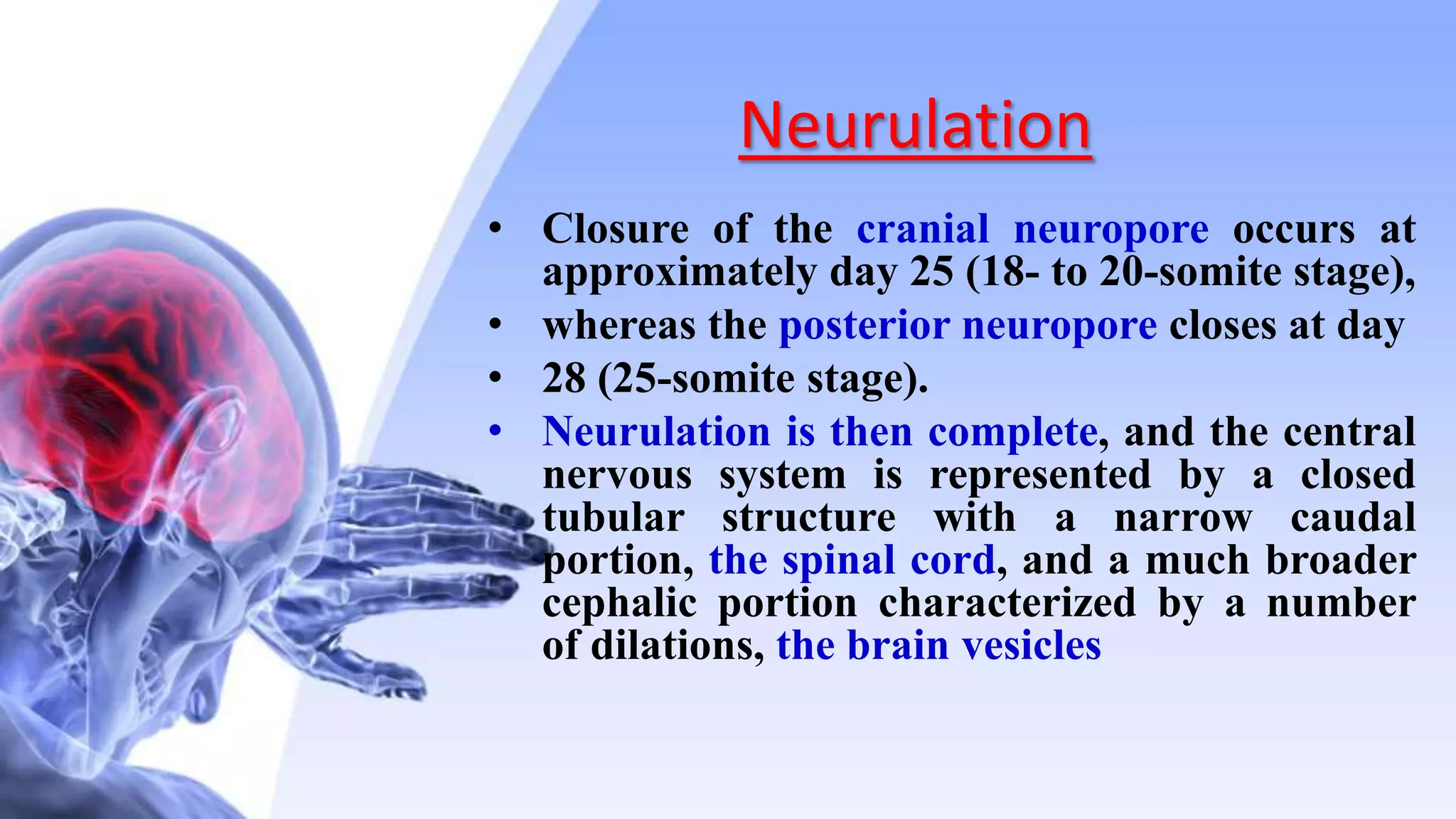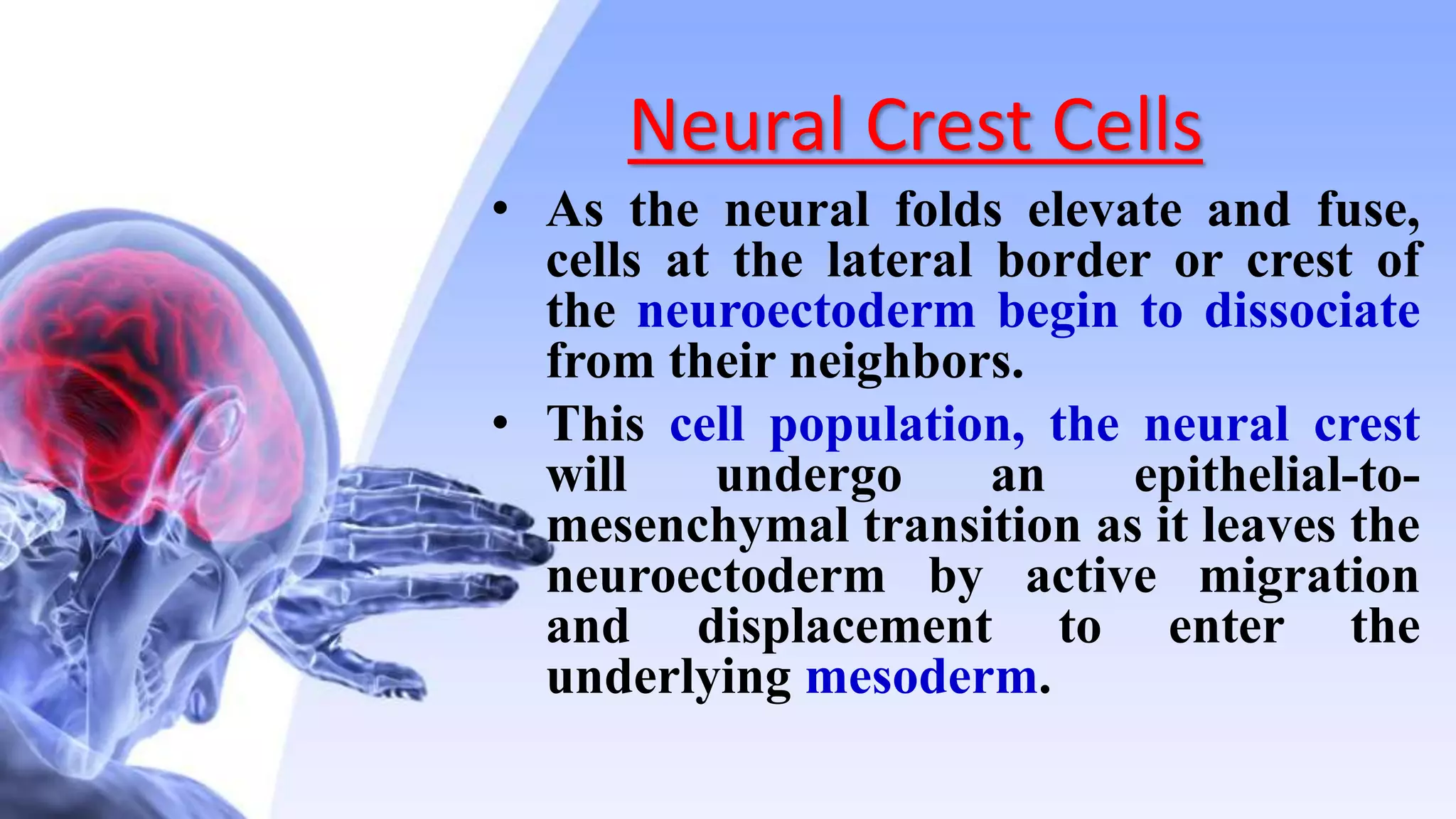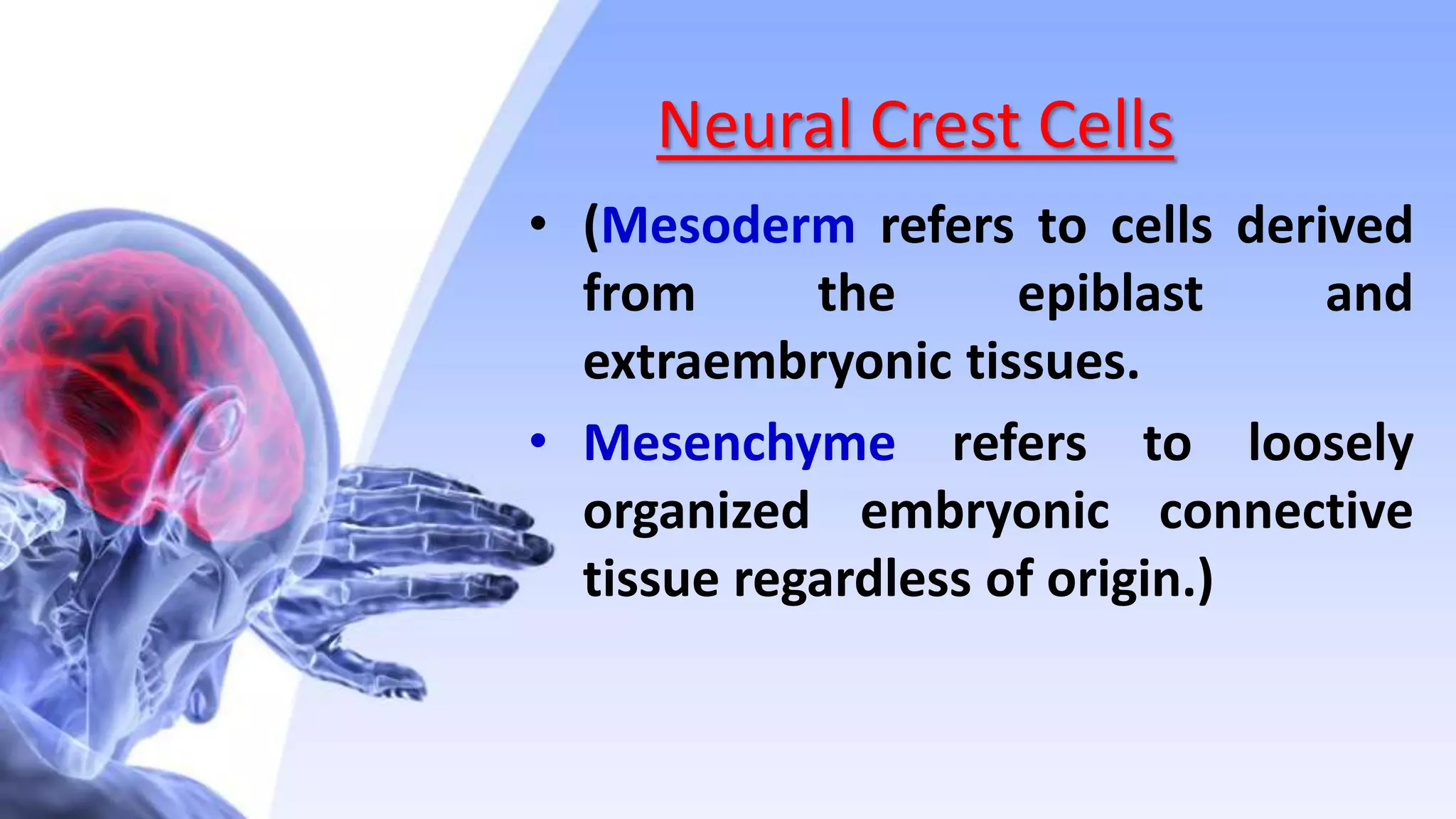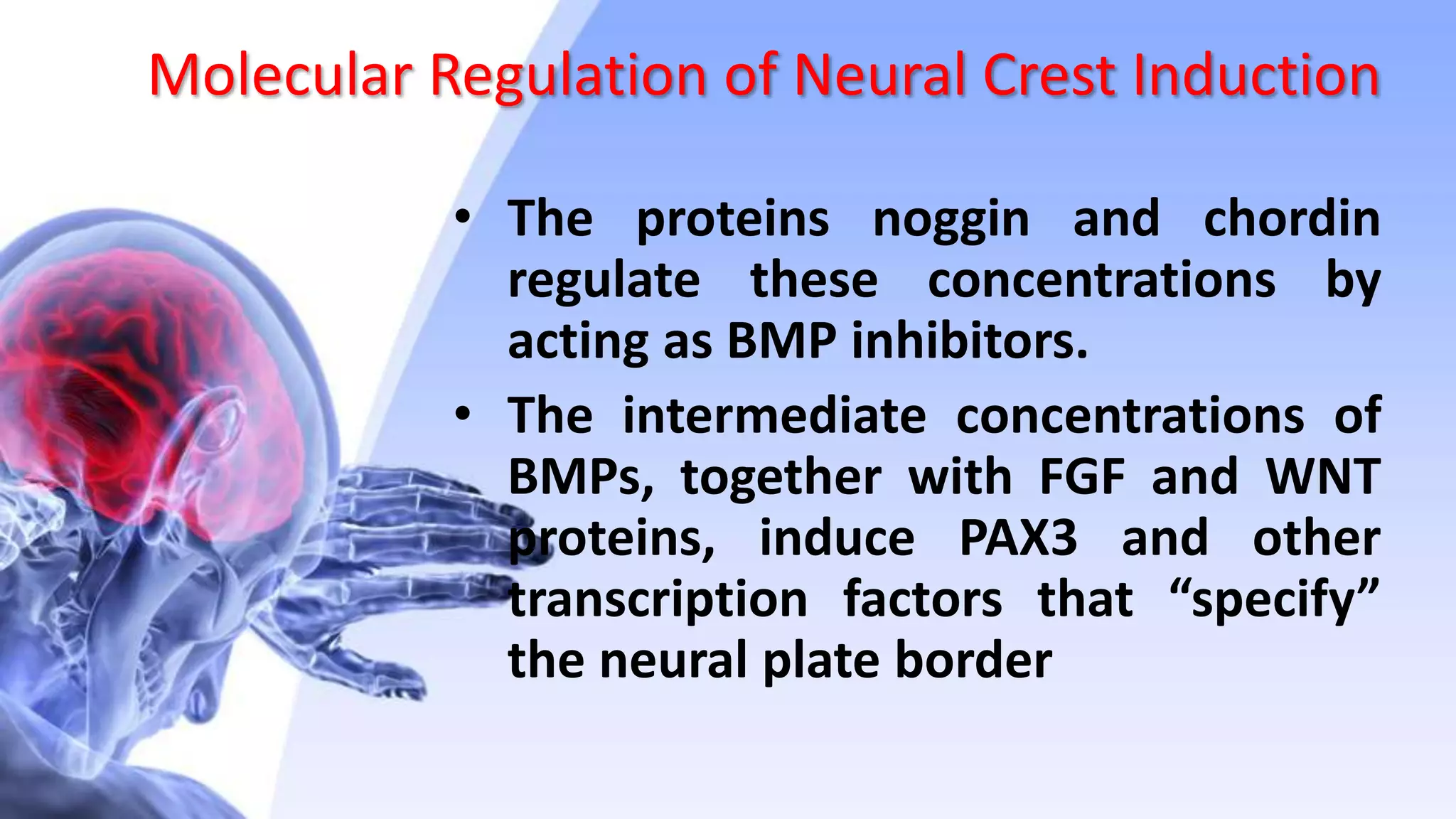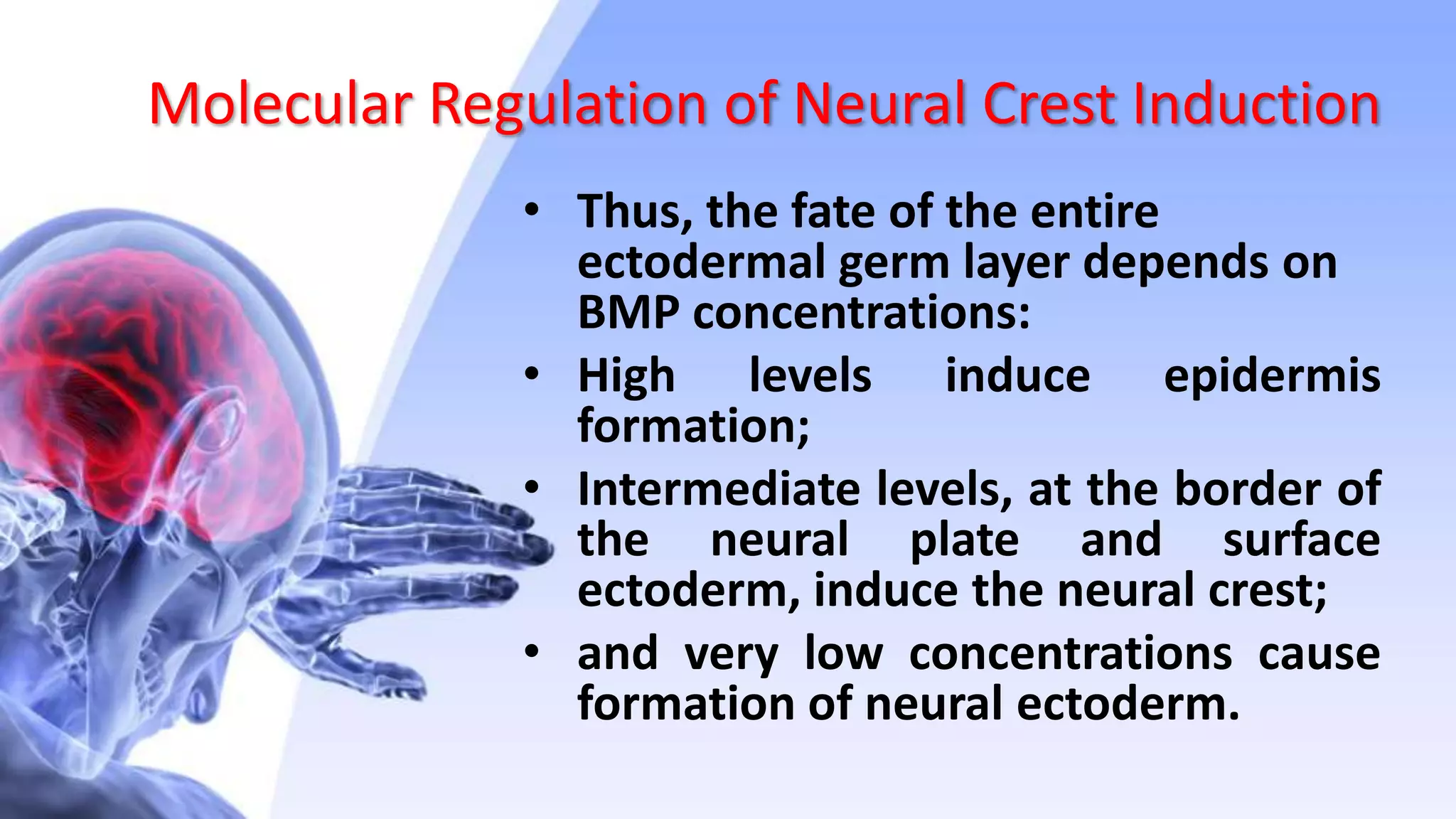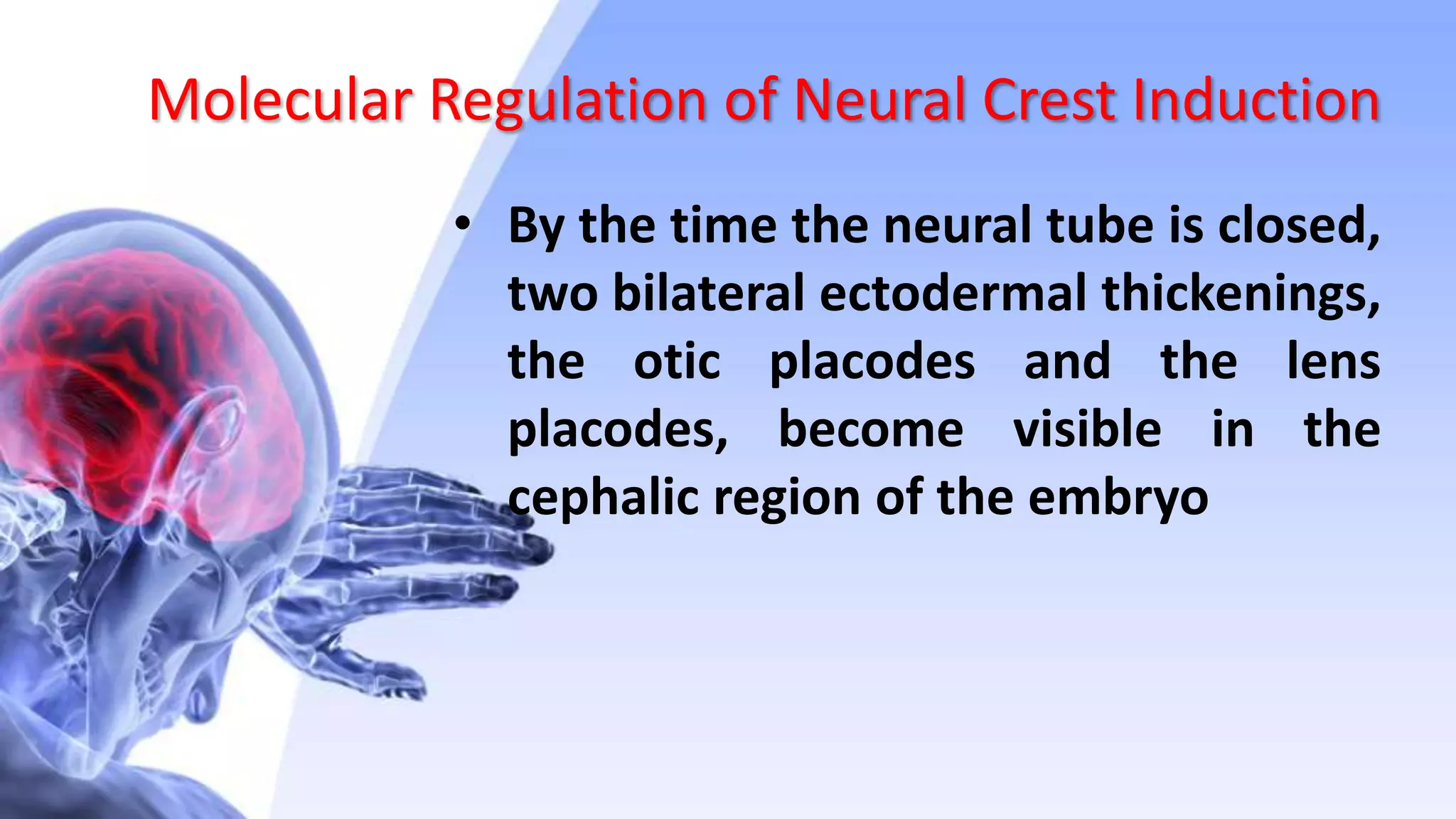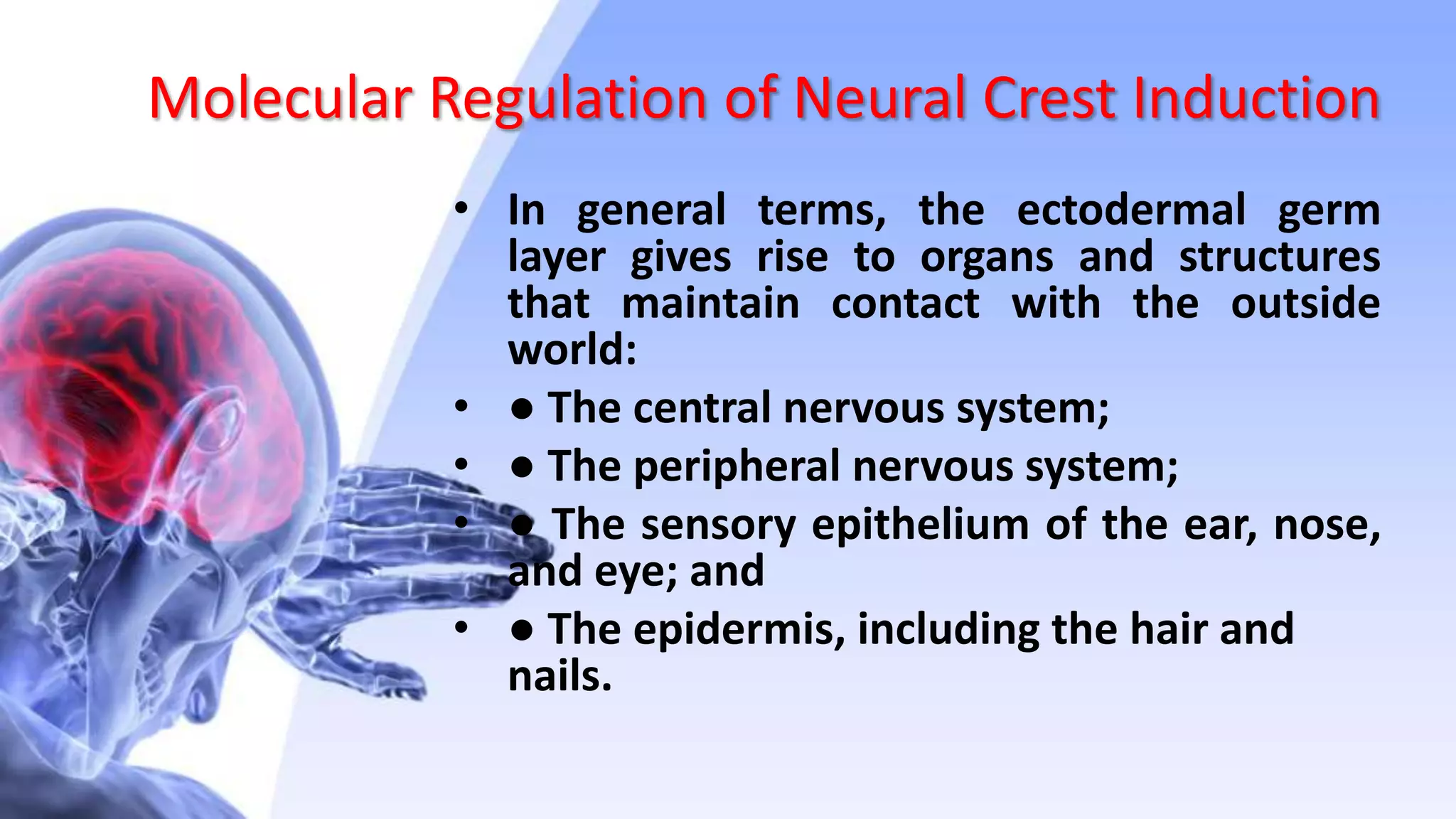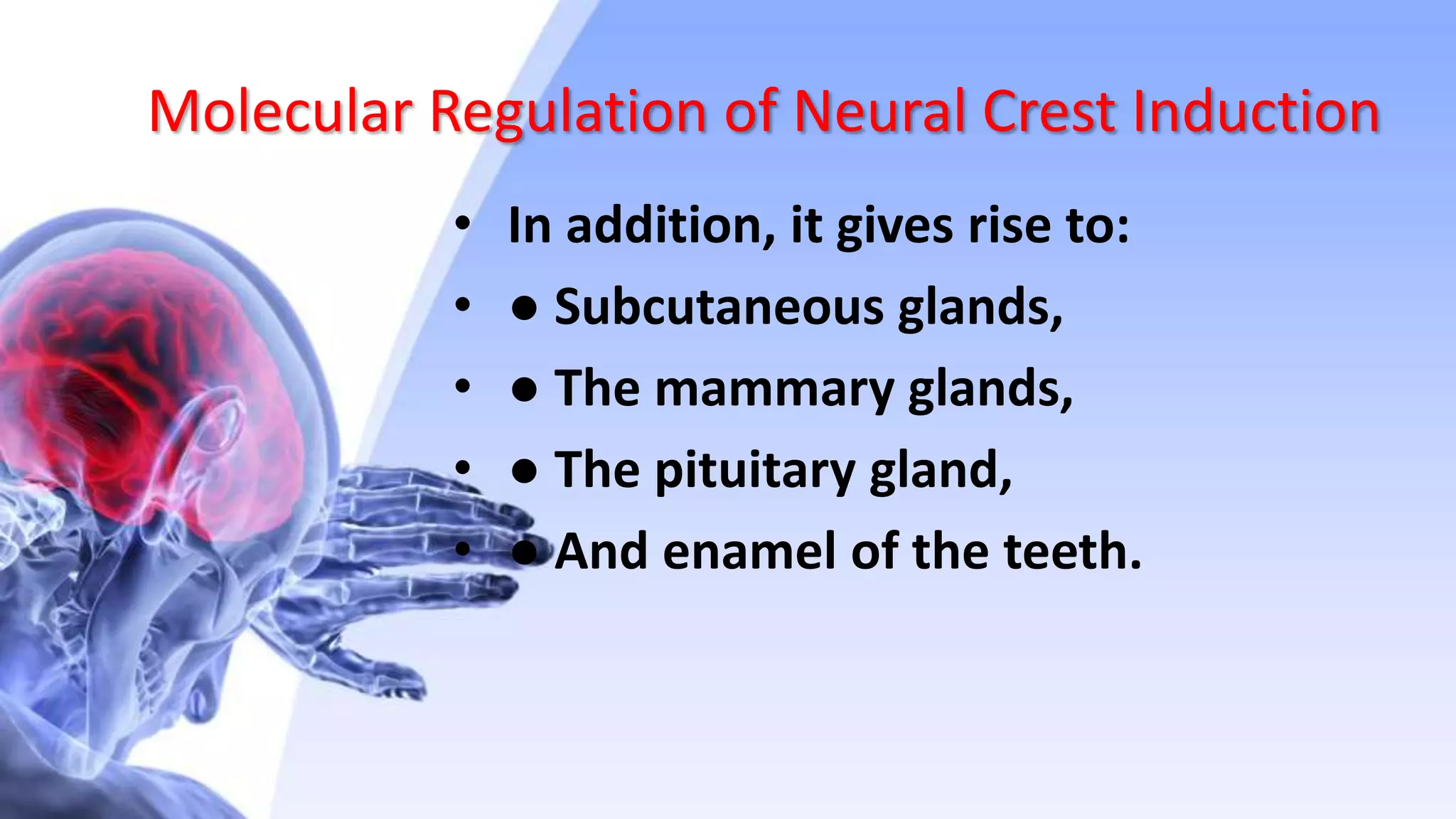The document discusses the molecular regulation of neural induction and neurulation. It explains that upregulation of FGF signaling and inhibition of BMP4 activity causes ectoderm to become neural tissue by default. During neurulation, the neural plate forms the neural tube as the neural folds fuse in the midline. Neural crest cells emerge and migrate throughout the embryo to form many tissues. Precise regulation of BMP concentrations induces different cell fates in the ectoderm.
